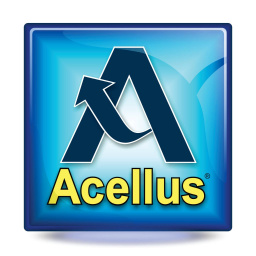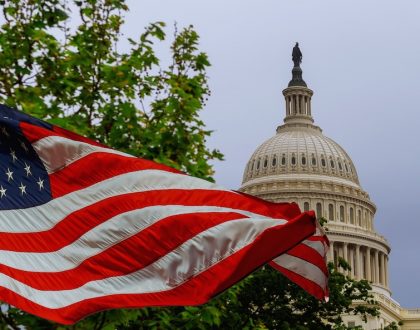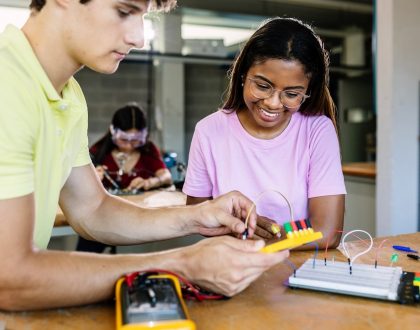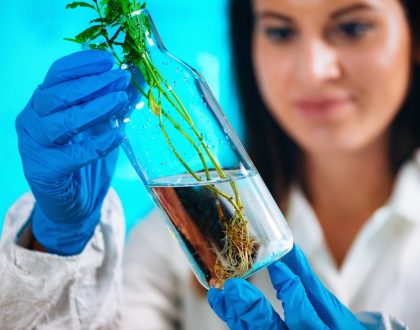Integrated Science 2
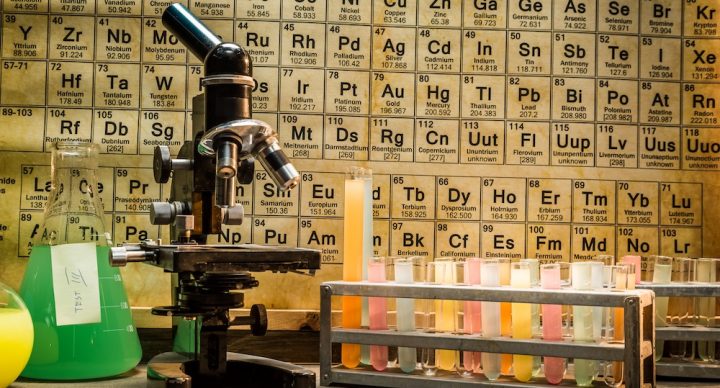
Course Features
Course Details
Course Overview
The Integrated Science 2 course builds on foundational scientific principles, guiding students through an in-depth exploration of life, earth, and physical sciences. Through engaging lessons, hands-on labs, and interdisciplinary connections, students will deepen their understanding of scientific processes, geological systems, ecological interactions, and the properties of matter and energy. The course emphasizes critical thinking, problem-solving, and real-world applications, equipping students with the skills to analyze complex systems and prepare for advanced scientific studies.
 This course was developed by the International Academy of Science.
Learn More
This course was developed by the International Academy of Science.
Learn More
Scope and Sequence
Unit 1: Scientific Inquiry and Photosynthesis In this unit, students will establish a strong foundation in scientific inquiry while exploring the vital process of photosynthesis. They will learn about the branches of science, essential scientific vocabulary, and the metric system, gaining the tools needed for accurate measurement and communication in science. Students will master the scientific method, understand the use of microscopes, and prioritize lab safety through lessons on safety rules and symbols. The Chemical Color Lab and a lesson on leaves and photosynthesis will connect scientific practices to the process that sustains life, helping students appreciate the role of plants in ecosystems. Unit 2: Minerals and Their Uses This unit focuses on the properties and applications of minerals, introducing students to key geological concepts. They will learn to identify minerals by their properties, explore methods of mineral identification through hands-on activities like the Mineral Identification Lab, and investigate the processes of mining and the practical uses of minerals. The Cookie Mining Lab will provide a practical perspective on resource extraction. By the end, students will understand the significance of minerals in everyday life and the environmental considerations of their extraction. Unit 3: The Rock Cycle In this unit, students will explore the dynamic processes of the rock cycle, learning how rocks form, transform, and recycle over time. They will study the characteristics of igneous, sedimentary, and metamorphic rocks, engaging in activities like the Igneous Rock Grain Lab and the Chocolate Chip Rock Cycle to reinforce their understanding. The Rock Cycle Lab will provide hands-on experience with these processes. Through these lessons, students will develop an appreciation for the geological forces that shape Earth’s surface and the interconnectedness of rock types. Unit 4: Weathering and Soil This unit examines the processes of weathering and the formation of soil, highlighting their roles in shaping Earth’s landscapes. Students will learn the differences between mechanical and chemical weathering, explore the properties of soil, and understand soil horizons. They will also investigate how climate influences soil development. By studying these concepts, students will gain insight into the environmental factors that affect soil quality and its importance to ecosystems and agriculture. Unit 5: Erosion and Land Formation In this unit, students will investigate the forces of erosion and deposition that sculpt Earth’s surface. They will learn how water, waves, wind, and glaciers shape landscapes, exploring concepts like soil erosion and sediment movement. Lessons on water movement and glacial activity will illustrate how these processes create landforms. Through these studies, students will understand the dynamic interplay between erosion and deposition and their impact on the environment and human activities. Unit 6: Plate Tectonics This unit delves into the theory of plate tectonics, explaining how Earth’s crust moves and reshapes the planet. Students will learn about the composition and physical structure of Earth, map tectonic plates, and explore the concept of continental drift. They will also study plate boundaries and the processes that deform Earth’s crust. By examining these geological phenomena, students will develop a deeper understanding of the forces driving Earth’s ever-changing surface. Unit 7: Earthquakes In this unit, students will explore the science of earthquakes, focusing on their causes, measurement, and societal impacts. They will learn what triggers earthquakes, how they are measured using scientific tools, and strategies for preparing for seismic events. Through these lessons, students will gain an appreciation for the power of geological forces and the importance of preparedness in mitigating the risks associated with earthquakes. Unit 8: Volcanoes and Mountain Formation This unit focuses on the formation of mountains and the dynamics of volcanic activity. Students will learn about the geological processes that create mountains, the causes and types of volcanic eruptions, and the characteristics of different volcanoes. A hands-on activity, Building a Volcano, will bring these concepts to life. By studying these phenomena, students will understand the dramatic processes that shape Earth’s topography and their significance in the planet’s geological history. Unit 9: Geologic Time and Fossils In this unit, students will explore Earth’s deep history through the geologic time scale and the study of fossils. They will learn about relative and absolute dating, types of unconformities, and the formation of fossils. A lesson on a new fossil discovery will connect these concepts to current scientific research. By examining these topics, students will develop an understanding of how scientists reconstruct Earth’s past and the evidence that reveals the history of life. Unit 10: Natural Resources and Conservation This unit examines the management and conservation of Earth’s natural resources, focusing on the distinction between renewable and nonrenewable resources. Students will learn about fossil fuels, alternative energy sources, and the principles of reduce, reuse, and recycle. A Reuse Project will encourage practical application of conservation strategies. Through these lessons, students will understand the importance of sustainable resource use and their role in protecting the environment. Unit 11: Earth’s Motions and Seasons In this unit, students will investigate the astronomical phenomena that govern Earth’s cycles, including rotation, revolution, and the reasons for seasons. They will learn about solstices, equinoxes, gravity, objects in orbit, moon motions, phases, and solar and lunar eclipses. By studying these concepts, students will gain a deeper understanding of Earth’s place in the solar system and the celestial mechanics that influence daily and seasonal patterns. Unit 12: Ocean Systems This unit explores the interconnected systems of Earth’s oceans, focusing on their physical and dynamic properties. Students will learn about ocean floors, salinity, density, currents, waves, and tides, as well as how temperature affects ocean depth. Through these lessons, students will develop an appreciation for the oceans’ critical role in global ecosystems and their influence on climate and coastal environments. Unit 13: Earth’s Spheres and Climate In this unit, students will examine the interactions between Earth’s four spheres—hydrosphere, atmosphere, geosphere, and biosphere—and their impact on regional climates. They will learn about the roles of water on Earth, air movement, and the factors that cause climatic variations. By studying these interconnected systems, students will understand how environmental processes shape Earth’s diverse climates and influence life on the planet. Unit 14: Ecosystems and Energy Flow In this unit, students will explore the structure and function of ecosystems, focusing on the interactions and energy flow within them. They will learn about land and water ecosystems, the needs of ecosystems, and the roles of biotic and abiotic factors. Lessons on energy transfer and cycles of matter will highlight the interconnectedness of organisms. A Biotic vs. Abiotic Activity will reinforce these concepts, helping students appreciate the delicate balance of ecosystems. Unit 15: Properties of Matter In this unit, students will investigate the fundamental properties of matter, exploring concepts like mass, volume, density, and states of matter. They will learn about solids, liquids, gases, and plasmas, as well as phase changes such as melting, vaporization, freezing, condensation, and sublimation. Hands-on activities like the Creating Condensation Lab and Sink and Float Lab will reinforce their understanding. Students will also study the kinetic theory, properties of metals, acids, bases, and viscosity, developing a comprehensive view of matter’s behavior. Unit 16: Atomic Structure This unit delves into the microscopic world of atoms, focusing on their structure and role in forming matter. Students will learn about elements, atoms, the nucleus, electrons, atomic number, and atomic mass. They will also explore molecules and compounds through activities like the Element Matching Activity and Molecules Story Activity. By studying these concepts, students will understand the building blocks of matter and their significance in chemical and physical processes. Unit 17: Chemical and Physical Changes In this unit, students will explore the differences between physical and chemical changes in matter, learning to identify mixtures, solutions, and signs of chemical reactions. They will study the law of conservation of mass, pure and non-pure substances, and engage in activities like the Separating a Solution Lab and Signs of a Chemical Change Comparison Worksheet. Through these lessons, students will develop the ability to analyze transformations of matter and their underlying principles. Unit 18: Energy and Its Transformations In this unit, students will investigate the nature of energy, its various forms, and how it transforms within systems. They will learn about the law of conservation of energy and engage in activities like the Forms of Energy Crossword Puzzle to reinforce their understanding. By studying energy transformations, students will gain insight into the fundamental role energy plays in physical processes and its applications in technology and everyday life.
This course does not have any sections.

